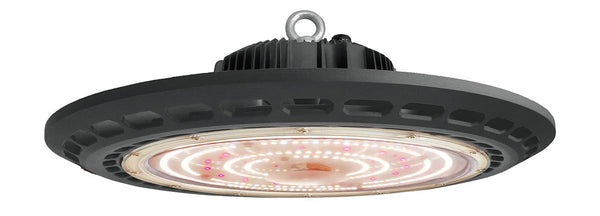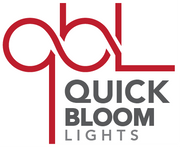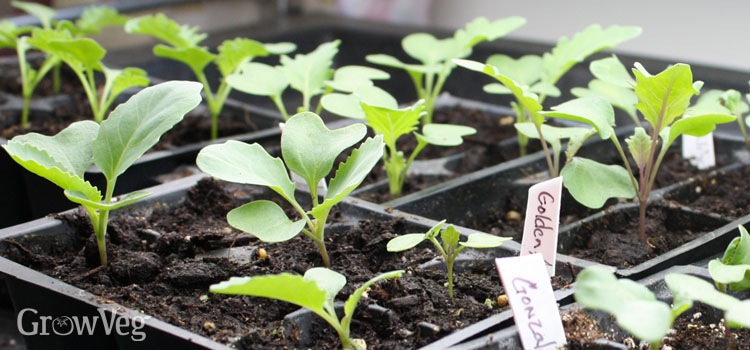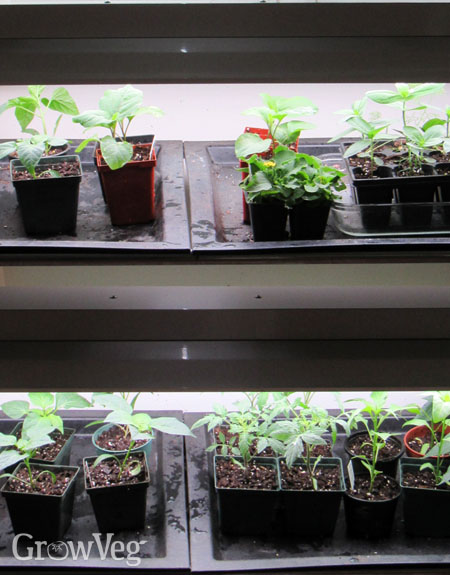Best Lights For Growing Microgreens – Everything You Need To Know
 Best lights for growing microgreens.
Best lights for growing microgreens.
We’ve looked a the best lights for growing microgreens and dove into different ways of how to grow them. First of all, I think, when growing microgreens just for your own food, you really don’t need any light, if you have the option to have a window sill with daylight or some other space with direct daylight. But this depends on your preferences. Of course, you can use it. For those who like to have a mini garden with lights in your home, we gathered and compare different home automated or not mini gardens. We hope you will find some value in this post for you if you prefer this method.
With that being said, when exposing yourself to the microgreen world as a grower on a bigger scale, you need to consider lights, when choosing indoor growing. I wouldn’t said, that this is the most important thing with growing, but it is one of more important things, for sure. I remember, when we started to grow and test some lights, we bought growing light and regular lights. In the shop we saw LED lights, but because the characteristics were approximately the same as regular ones, however more expensive, we didn’t buy them. At that time. And when tested, we were satisfied with the regular ones, because with growing lights everything seems the same. There wasn’t any difference in growth, just in price. It was double the price as a regular one. I will touch on these later in this post.
When should I expose microgreens to light?
Well, at the beginning, you need to cover your seeds (our method is to cover with another tray, but you can use anything else), to prevent moisture to go out. So the germination phase is taking place in the dark. With the faster varieties, this phase will be just a few days. With some herbs, you will have a much longer period in the dark. To help you when to expose microgreens to light, we have gathered 20 of the most common varieties in a table, see below. In general, when seedlings are approx. 2-3cm tall (0,79”-1,18”) in the dark period, you can expose them to light.
Disclaimer: Some of the products may contain an affiliate link and we may make a commission if you click on it at no additional costs to you.
Density numbers for our small containers and 1020 trays.
How many hours of light do microgreens need?
Plants are just like humans. They also need to rest. That’s why, we use this method – simulating daylight – as long as it is daylight, we have lights on. When the dark is coming, the lights went out. Of course you don’t do this by yourself every day. At least here, you can use an electric timer. We are using like a similar one to this
one, because it fits our needs.
But you can use any of your choice. With that being said, on average we have lights on for about 12 hours (in summer longer, in winter shorter time).
BN-LINK 24 Hour Plug-in Mechanical Timer Grounded Aquarium, Grow Light, Hydroponics, Pets, Home, Kitchen, Office, Appliances, UL Listed 125VAC, 60 Hz, 1875W, 15A, 1/2HP (1)
$9.99
Rated 4.5 out of 5 by 7612 reviewers on Amazon.com
Buy Now
Can any LED light be used as a growing light?
Let me first explain the different data for light and what microgreens are looking for. Like other plants, microgreens require lights for photosynthesis. Otherwise you will get yellow microgreens (which are also great, not just for its performance but also they taste more sweet compared to the ones with clorophil).
T5 (0,6”), T8 (1”) or T12 (1,5”) means tubular diameter of the light tube. T8 fluorescent lamps are the most commonly used type today. They are 48 inches in length, and have a 1 inch lamp diameter. T8 and T12 tubes are also available in other lengths such as 8-ft tubes, but 4-ft lengths remain the most common type.
Lumens are a measure of how bright a light will appear to the human eye, not how well a LED light will grow plants. The strength or intensity of the light can be measured by the total wattage. The higher the wattage, the more intense the light will be.
Kelvins – color temperature
Most fluorescent tube lights have a correlated color temperature (CCT) from 4000K to 6500K, as they have been considered to be most suitable for retail and office environments, respectively. Similarly, LED tube lights are also available in a wide range of color temperatures. Since daylight is 6500K, and we want it to similate as much as its possible, your choice should be 6500K color temperature.
Nm – are wavelenghts, which plants need in the visible region from 400 – 700nm. Photosynthetic photon flux (PPF) designates the intensity of visible spectral radiation, which plants use in the photosynthesis process.
Left: yellow pea, right: yellow corn.
Detailed wavelengths of interest for growers using LEDs, within the 400-700 nm range, applicable to plants growth, are:
| nm | description |
| 439 | blue absorption peak of chlorophyll a |
| 450-460 | the royal blue that is absorbed by one of the peaks in beta-carotene. It is a readily available LED wavelength commonly used to excite the remote-phosphor in white LED lamps |
| 469 | blue absorption peak of chlorophyll b. To promote fast growth of the plant. |
| 430-470 | Blue range that is important for the absorption of chlorophyll a and b, which is key for vegetative growth. |
| 480-485 | Blue color – second absorption peak of beta-carotene. |
| 525 | green light, is a phototropic activator that researchers are still trying to find the chromophore of. Green light isn’t important for photosynthesis, but it is apparent that plants are gaining direction and environmental signals from it, and that it affects internodal spacing. This is also the wavelength of GaN or InGaN green LEDs commonly used in RGB and tunable applications. |
| 590 | Yellow color – key for carotenoid absorption. Carotenoids are starch-storing, structural and nutritional compounds. is additionally the phycoerythrin absorption wavelength. Phycoerythrin is a red protein-pigment complex from the light-harvesting phycobiliprotein family, present in red algae and cryptophytes, and is an accessory pigment to the main chlorophyll pigments responsible for photosynthesis. |
| 625 | Orange color – phycocyanin absorption peak. Phycocyanin is a pigment-protein complex from the light-harvesting phycobiliprotein family, along with allophycocyanin and phycoerythrin. It is also an accessory pigment to chlorophyll. |
| 642-645 | Red color – peak absorption point of chlorophyll b. |
| 660 | often called the super-red LED wavelength and is important for flowering. |
| 666-667 | peak red absorption point for chlorophyll a. |
| 730 | often referred to as far-red, is important for phytochrome recycling. It is needed for all kinds of morphogenic (shape-forming) processes. Improve the yield (blooming and fruiting). A few minutes of 730 nm light treatment after the full light cycle is over will revert the phytochrome chromophore from activated to inactive. This resets the chemistry for another lights-on cycle and may be useful in shortening the classic dark side of the photoperiod. This color is important to plants but is not considered in PPF as it is outside of the 400-700nm PPF range. |
Source from: ACDC Dynamics Online
There are many advantages of LED tubes over fluorescents, but we won’t go into depth, let us mention just three primary advantages:
- Higher efficiency, energy savings (up to 30-50%)
- Longer lifetimes (the one we use are 30k hours)
- No mercury
Plants use more red and blue light for photosynthesis than they do green, and the absorption spectrum of plants can effectively be matched by using the right combination of LEDs.
Although red light is sufficient for plant growth, blue light is important for increased leaf thickness and number of chloroplasts. For microgreen production, it is suggested to use more blue then red color. Blue one is keeping them more dense. That’s why LED light are more common to use then LED grow lights with microgreen growers. The same goes for us. We use LED lights. Because when comparing these two lights, there wasn’t any significant difference plus LED’s have a much longer lifetime than regular lights. I would say that its primarily because microgreens are so fast growing plants, that this difference can’t be seen so quick.
If you have the option to grow microgreens outside, especially under the sun, this would be the cheapest and greatest light source for you microgreens, but since we are now gathering information on indoor growing, let’s stick with artifical lights. Artificial lighting provides a constant and predictable source of lighting. We will be discussing two options, since we are using them. The first one is fluorescent light, which we used in the beggining of our growing (but still have the same set up and lights after 5 years are still working ). The second one, used nowdays, whenever we buy a new setup are LED lights. As you will see in the picture, we are using two LEDs per shelf (120 cm – 47,24”).
How far should the light source be from microgreens?
With our setup we have installed lights 22cm (8,67”) above the top of the containers, where microgreens are sown. We found that this is the ideal distance for all of our varieties, that we grow. In between we were testing and putting the lights closer on 13 cm (5,12”) to the microgreens and longer version, 30 cm (11,81”). But non of them presented as well as 22 cm (8,67”). Nor plants were to short or they perform leginess. Another thing that we discovered is the width of the lights. When we placed lights 25cm (9,85”) apart, the long-term growing microgreens like mentha, water cress and some other didn’t perform well on the sides. Two in the middle, who get most of the lights, grow fully, with very dense and big leaves. So we tried to install lights more broadly with 40 cm (15,75”) apart and now, the growth is evenly for all on the shelves (we use rack with proportions: 120 cm (47,25”) long and 50 cm (19,69”) wide, so we get 6 containers in row and 4 in width.

Distance from the trays to light source in centimeters on the picture.
Bottom line – what are the best lights used for growing microgreens?
As always, we try to simplify things. That’s why we suggest, and also are still using LED lights, T8 or T5 size. I found some
SIMILAR T8 OR
SIMILAR T5 on Amazon, in case you will try to search for it. Try to find the ones with lumens between 1700 and 2000. Then seach for 6500K color (or at least 6000K). If you want to have low budget lights, those are good for starting your own microgreen business. With our production, these ones perform well for all fast and slower growing microgreens. But once again, this is our prefered selection. You may find your own best option, or you could test by yourself. In this case, we will be happy if you could share your experiences with us. Please feel free to leave comments down below. If you would like to get more information on different growing mediums, then read our blog
here. For even more in depth information on supplies, tools, how to build successful microgreen business and more, we have gathered our own online course,
Microgreens MasterClass. You are welcome to take a look into the curriculum.
6 Pack LED Shop Light 4FT, T5 Integrated Single Fixture, 22W, 2200lm, 6500K Super Bright White, Linkable Shop Light, Utility Shop Lights, Corded Electric with Built-in ON/Off Switch
$40.99
Rated 4.7 out of 5 by 1636 reviewers on Amazon.com
Buy Now
Our rack with light instalation.
Want to learn more?
If you have any questions about the information cited in this post or about microgreens in general, please leave a comment below or reach out to us via email
hello@reactgreens.com.
Leaving a comment or writing to the provided e-mail does not add your e-mail address to any mailing or marketing list.
We've looked a the best lights for growing microgreens and dove into different ways of how to grow them.

reactgreens.com






















